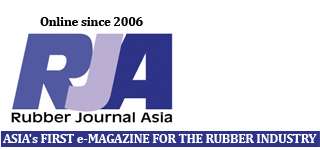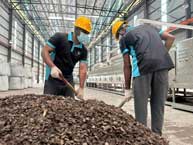Graphite producer Graphjet Technology says that it has achieved key breakthroughs in catalysing graphitisation to produce synthetic graphite of quality with its patented green graphite production technology.
Graphjet claims its “green” graphite technology is the first in the world to produce artificial graphite directly from palm kernel shells, a widely available waste product in Malaysia and Indonesia.
The company recently commissioned the world’s first “green” graphite facility in Malaysia, with an annual production capacity of up to 3,000 tonnes. This facility is capable of supporting battery production for approximately 40,000 electric vehicles per year. Per kg of graphite produced, Graphjet’s patented technology produces only 2.95 kg CO2 emissions, significantly lower than traditional methods, it adds.
Pilot-scale testing has demonstrated that Graphjet’s artificial graphite can achieve purity levels of up to 99.99%, validating the Company’s technology and its ability to effectively compete with all forms of graphite production, including mining and other synthetic graphite operations.
In addition to the high purity levels achieved, Graphjet’s production technology boasts a 98.8% graphitisation level.
The production process of artificial graphite generally involves such steps as raw material mixing, molding, high temperature and high pressure graphitisation, and graphite characteristics modifications. A high level of graphitisation is key for the company’s “green” graphite technology, as high graphitisation demonstrates that the composition of the graphite lattice is organised and of a uniform crystal structure which results in improved physical and chemical characteristics.
It adds that graphite of this quality “is a remarkable material for industries and applications such as lithium ion batteries, thermal management, and graphite electrodes, among others”.
“Throughout Graphjet’s process, our core differentiator is our proprietary catalysts formula, which enables us to cost-effectively produce graphite of the highest quality,” said Aiden Lee, CEO/Co-Founder of Graphjet. “Maintaining high temperature graphitisation for extended periods requires high-quality equipment to control parameters such as temperature, pressure, time and graphitisation gas. These factors are critical in determining the graphitization degree and properties of artificial graphite.”
Graphjet claims it has achieved the highest levels of both purity and graphitisation among all biomass graphite production technologies, which further demonstrates its suitability for the production of semiconductors and anode materials for high-performance electric vehicle batteries.
Notably, the company’s technological achievements have been validated by third-party labs in China.
Higher graphitisation levels signify a higher percentage of graphite crystal formation within a graphite sample. The graphitisation level will depend on key factors during graphitisation process such as temperature, pressure, time and graphitisation gas.
Artificial graphite with favourable heat conductivity properties, stability and chemical properties can be applied in the production of lithium-ion batteries, graphite electrodes, heat management and high-performance porcelain industries. With the continuous advancement of science and technology, the application fields of artificial graphite will be further expanded and demand will continue to increase.

